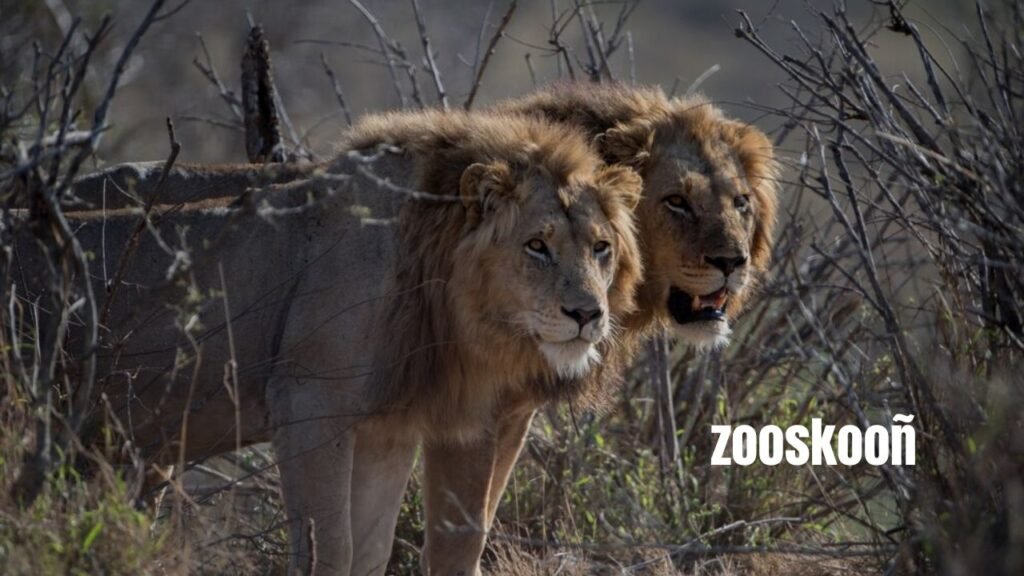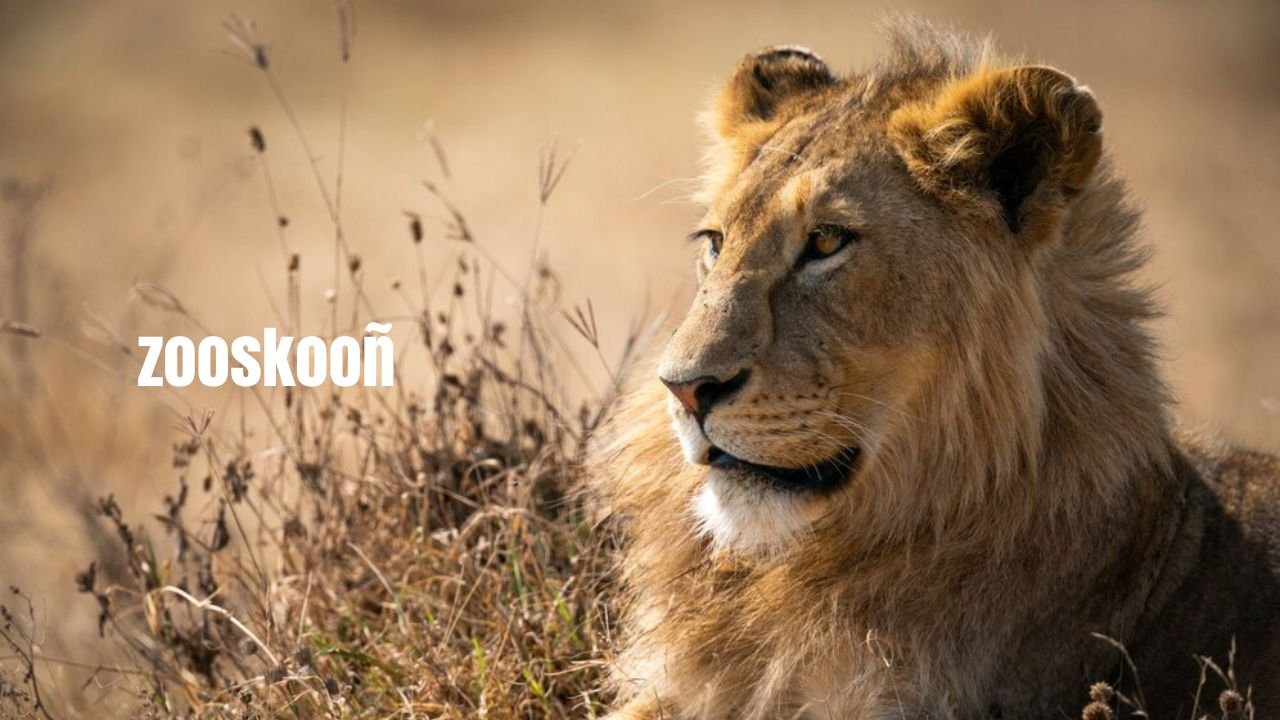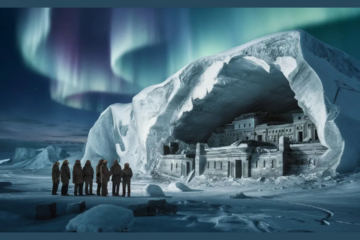Introduction to Zooskooñ
Zooskooñ is revolutionizing the idea of zoological institutions by placing animal welfare and enriching educational experiences at the forefront. Situated in a serene environment, zooskooñ is home to a diverse collection of species from around the world. This innovative destination serves as a center where visitors of all ages can explore, learn, and connect with the natural world.
The thoughtfully designed layout of zooskooñ allows guests to navigate its various attractions with ease. The zoo features themed zones that replicate natural habitats, including the captivating Rainforest Realm, the frigid Arctic Adventure, and the vast Savanna Safari. These immersive environments not only highlight the beauty of different ecosystems but also foster a deep respect for wildlife and emphasize the urgent need for conservation efforts.
Table of Contents
What Makes Zooskooñ Unique?
Zooskooñ distinguishes itself as a contemporary zoological facility dedicated to the dual missions of animal welfare and visitor education. Unlike traditional zoos that often prioritize entertainment, zooskooñ focuses on creating naturalistic habitats that encourage authentic connections between visitors and animals. This innovative approach engages guests on a deeper level, cultivating a lasting appreciation for wildlife and the crucial role conservation plays in safeguarding our planet.
Attractions at Zooskooñ
- Biodiversity Hotspot
At zooskooñ, visitors can delve into a rich tapestry of plant and animal life, featuring numerous species endemic to the region. Guided tours led by passionate conservationists provide valuable insights into the local ecosystem, encouraging guests to understand the significance of biodiversity and its preservation. - Eco-Friendly Accommodations
The accommodations at zooskooñ are designed with sustainability in mind. Key features such as solar panels, rainwater harvesting systems, and comprehensive waste recycling initiatives reflect zooskooñ‘s commitment to sustainability. - Cultural Experiences
Zooskooñ invites visitors to immerse themselves in local culture by engaging with nearby communities and learning about their rich traditions and lifestyles. Through cultural workshops, traditional crafts, and opportunities to savor local cuisine, guests gain a deeper understanding of the region’s heritage while building meaningful connections with the community. - Adventure Activities
For adventure enthusiasts, zooskooñ offers a variety of eco-friendly activities, including hiking, birdwatching, and river rafting. These experiences are designed with a strong emphasis on preserving the natural environment, ensuring that the beauty of the surroundings is protected for future generations.
The Philosophy Behind Zooskooñ
A Commitment to Conservation
Zooskooñ exemplifies a strong dedication to wildlife conservation, actively collaborating with various organizations to enhance breeding programs, habitat restoration, and community initiatives that protect endangered species. This unwavering commitment ensures that at-risk species receive the essential protection and support they need. Key conservation initiatives at zooskooñ include:
- Endangered Species Breeding Programs
The zoo focuses on breeding critically endangered species such as the Amur leopard and California condor. These programs are vital for increasing population numbers and ensuring genetic diversity. - Habitat Restoration Projects
These efforts are crucial for maintaining ecological balance and promoting biodiversity.
Education and Awareness
Education is central to zooskooñ’s mission. The zoo offers a variety of educational programs for schools, families, and individuals, fostering a deeper appreciation for wildlife and conservation initiatives. Guests can engage with animals through hands-on exhibits and guided tours that showcase their natural behaviors. Some key educational initiatives include:
- School Programs
Zooskooñ provides tailored educational programs for different age groups, emphasizing the significance of environmental science and wildlife conservation. - Public Workshops
The zoo hosts workshops covering topics such as animal care, conservation strategies, and biodiversity, encouraging visitors to engage in meaningful discussions about environmental stewardship.
Sustainable Practices
Sustainability is a core value at zooskooñ. The facility adopts eco-friendly practices to minimize its environmental impact. Key sustainable initiatives include:
- Solar Energy Utilization
Zooskooñ harnesses solar energy to power various operations, significantly reducing reliance on non-renewable energy sources. - Water Conservation Efforts
Implementing rainwater harvesting and recycling systems showcases zooskooñ‘s commitment to conserving precious water resources. - Waste Reduction Strategies
The zoo actively reduces single-use plastics and promotes recycling throughout the facility, fostering a culture of sustainability.
Eco-Friendly Practices at Zooskooñ

1. Conservation Initiatives
Zooskooñ partners with environmental organizations to safeguard and restore local ecosystems. Their projects focus on habitat restoration, wildlife protection, and environmental education, ensuring that the surrounding flora and fauna thrive.
2. Sustainable Tourism
At Zooskooñ, all tourism activities are meticulously designed with sustainability at the forefront. The zoo follows low-impact tourism principles to minimize environmental harm. This includes using biodegradable products, energy-efficient appliances, and encouraging responsible behavior among visitors to foster a deeper respect for nature.
3. Community Engagement
Zooskooñ is dedicated to collaborating with local communities by providing job opportunities and involving residents in decision-making processes. This partnership not only preserves the region’s cultural heritage but also promotes sustainable economic development, ensuring that the benefits of conservation efforts extend to the community.
In summary, Zooskooñ exemplifies a comprehensive approach to wildlife conservation, education, and sustainability. Through its initiatives, the zoo not only protects endangered species but also motivates visitors to play an active role in preserving the planet’s biodiversity.
The Essential Role of Zooskooñ in Animal Conservation
Animal conservation is a core component of the Zooskooñ initiative. With many species facing extinction due to habitat loss, climate change, and illegal poaching, the role of zoos is critical for maintaining biodiversity.
Breeding Programs and Species Reintroduction
Modern zoos, including Zooskooñ, play a pivotal role in conservation through their breeding programs for endangered species. These programs aim to preserve genetic diversity and create a safety net for animals at risk in their natural habitats. The Zooskooñ movement highlights the importance of species reintroduction efforts, allowing these animals to thrive in the wild and maintain ecological balance.
Habitat Preservation Initiatives
In addition to breeding programs, Zooskooñ is heavily invested in habitat preservation. Recognizing that wildlife protection is intrinsically linked to conserving their natural environments, the zoo actively engages in projects such as reforestation, wetland restoration, and the creation of wildlife corridors. These efforts facilitate safe migration and movement of animals within their ecosystems.
Public Awareness and Education
Zooskooñ is committed to promoting public engagement in conservation through educational programs, workshops, and outreach initiatives. By raising awareness about the challenges facing wildlife, Zooskooñ empowers individuals to adopt sustainable practices and support reputable conservation organizations. This educational outreach is essential for nurturing a community that values conservation.
Challenges and Limitations of Zooskooñ
Implementation Complexity
Implementing effective conservation strategies within the Zooskooñ framework poses various complexities. It demands careful planning and coordination across different organizational functions. Challenges may arise from integrating data systems, ensuring compatibility with existing infrastructure, and the need for workforce upskilling. Overcoming these obstacles involves a phased approach to implementation and a commitment to investing in training programs that promote smooth transitions and broad acceptance of new practices.
Data Privacy and Security Concerns
The collection and use of user data within Zooskooñ initiatives present significant concerns regarding data privacy and security. Organizations must adhere to strict regulatory standards and adopt robust cybersecurity measures to safeguard sensitive information. By proactively addressing these issues, Zooskooñ can build trust with its audience and mitigate risks associated with potential data breaches.
In conclusion, the Zooskooñ movement embodies a holistic approach to animal conservation, integrating breeding efforts, habitat preservation, public education, and responsible data management. Through these collective efforts, zoos play an indispensable role in ensuring the survival of endangered species while fostering a culture of conservation that extends beyond their walls.
Cultural Representations of Zooskooñ
The concept of Zooskooñ is deeply intertwined with cultural narratives that influence our understanding of the complex relationship between humans and animals. This dynamic is reflected in various art forms and media, enriching our perspectives on wildlife and conservation.
Art and Literature
Historically, artists and writers have utilized zoos as a backdrop to explore themes such as freedom, captivity, and the human-animal bond. Classic works like George Orwell’s Animal Farm delve into these concepts through allegory, while contemporary documentaries shed light on the challenges faced by endangered species. The portrayal of zoos in art and literature mirrors societal attitudes toward wildlife conservation, making Zooskooñ a significant cultural symbol.
Film and Media
In film and media, the representation of zoos often oscillates between fascination and critique. Documentaries like Blackfish and Our Planet illuminate the ethical dilemmas associated with animal captivity, prompting audiences to reflect on the implications of confining animals. Conversely, family-friendly films such as Madagascar offer a whimsical perspective on zoo life, celebrating the lighter aspects of animal existence. Through these diverse portrayals, Zooskooñ inspires critical discussions about animal welfare and the ethics of conservation.
Community Engagement and Activism in Zooskooñ
Zooskooñ serves as a vital platform for community engagement and activism, emphasizing the importance of environmental stewardship. Many zoos, including Zooskooñ, host events, workshops, and educational programs aimed at inspiring local communities to take an active role in conservation efforts. By fostering a culture of conservation that transcends their physical boundaries, these zoos empower individuals to contribute meaningfully to wildlife protection.
Visitor Information
Planning Your Visit to Zooskooñ
To enhance your experience at Zooskooñ, careful planning is essential. Here are some key tips for visitors:
- Operating Hours: Always check the official Zooskooñ website for seasonal hours and any special events that may affect your visit.
- Ticket Information: Buying tickets online often provides discounts and helps you avoid long lines at the entrance.
- Accessibility: Zooskooñ prioritizes accessibility for all guests, offering wheelchair rentals and ensuring that accessible pathways are available throughout the facility.
Facilities at Zooskooñ
Zooskooñ offers a range of amenities designed to ensure that families enjoy a comfortable visit. These facilities include:
- Dining Options: Several cafes and restaurants provide diverse food and beverage choices, accommodating various dietary needs.
- Gift Shop: The well-stocked gift shop features educational toys, books, and souvenirs, allowing visitors to take home a piece of their Zooskooñ experience while supporting the zoo’s mission.
- Rest Areas: Shaded seating areas throughout the zoo provide families with spaces to relax and soak in their surroundings.
Special Programs at Zooskooñ
For those looking to deepen their connection with wildlife and conservation, Zooskooñ offers unique programs tailored to a variety of interests:
- Membership Programs: Annual memberships grant unlimited visits, discounts on special events, and exclusive access to members-only activities, fostering a closer relationship with Zooskooñ.
- Private Tours: Customized tours focusing on specific topics such as animal behavior or conservation initiatives provide a tailored educational experience for visitors.
The Future of Zooskooñ: Challenges and Opportunities
As Zooskooñ looks toward the future, it encounters both challenges and opportunities.
Changing Public Perception
Public perceptions of zoos are evolving, with increased scrutiny on animal welfare and ethical practices. To adapt, Zooskooñ must prioritize transparency and ethical standards while emphasizing the well-being of its animals. Engaging in meaningful dialogue with visitors is essential to address public concerns and build trust.
Technological Advancements
Emerging technologies present new avenues for Zooskooñ to enhance its conservation efforts. Innovations such as virtual reality experiences that educate visitors about wildlife habitats and genetic technologies in breeding programs can bolster animal welfare and conservation initiatives.
Global Collaboration
The future of Zooskooñ depends on global collaboration among zoos, conservation organizations, and governmental bodies. By working together, these entities can develop comprehensive strategies to tackle pressing challenges like habitat destruction and climate change. This collaboration fosters a shared sense of responsibility for preserving the planet’s biodiversity.
FAQs about Zooskooñ
- What is Zooskooñ?
Zooskooñ is a concept that embodies the cultural narratives and representations associated with zoos, examining the intricate relationship between humans and animals. It reflects societal attitudes toward wildlife conservation and animal welfare. - How do art and literature contribute to the understanding of Zooskooñ?
Art and literature often use zoos as backdrops to explore themes of freedom, captivity, and the human-animal bond. Works like George Orwell’s Animal Farm and modern documentaries highlight the complexities of this relationship, influencing public perceptions of zoos and conservation. - What role do zoos play in community engagement?
Zooskooñ serves as a platform for community engagement through events, workshops, and educational programs designed to inspire a sense of environmental stewardship and encourage local communities to participate in conservation efforts. - What amenities does Zooskooñ offer for visitors?
Zooskooñ provides various amenities, including dining options catering to different dietary preferences, a gift shop featuring educational merchandise, and rest areas where families can unwind during their visit. - What special programs does Zooskooñ offer?
Zooskooñ features several special programs, such as annual memberships for unlimited visits and discounts, along with private tours focusing on specific interests related to animal behavior or conservation initiatives. - What challenges do zoos face in the future?
Zoos confront evolving public perceptions regarding animal welfare and ethical practices. To meet these challenges, they must prioritize transparency and engage in meaningful dialogue with the public, ensuring they adapt to the changing conservation landscape. - How does technology influence Zooskooñ?
Technological advancements offer new opportunities for enhancing conservation efforts within Zooskooñ. Innovations such as virtual reality experiences and genetic technologies can improve educational outreach and promote animal welfare.
Conclusion
In conclusion, Zooskooñ represents a multifaceted exploration of the relationship between humans and animals through cultural narratives, art, and community engagement. By examining how zoos are portrayed across various media, we gain insight into societal attitudes toward wildlife and conservation. As public perceptions evolve and technological advancements arise, Zooskooñ must adapt and innovate, prioritizing ethical practices and fostering global collaboration. This evolution will play a crucial role in shaping the future of zoos, ensuring they continue to serve as essential platforms for education, conservation, and community involvement. Engaging with the themes surrounding Zooskooñ allows us to actively participate in the broader conversation about our responsibility toward the natural world.
You can see latest news and updates at: Secret Class



